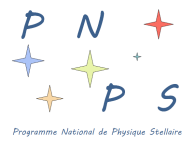Stellar multiplicity is an important outcome of star formation process. Studying its properties at birth and in different environments is a key to understand the CMF-IMF connection, as well as to investigate the universality of star formation.
After briefly describing our current knowledge of young stars multiplicity, I will present the recent results we obtained in two very distinct regions. Taurus is a quiescent filamentary low mass star forming region with a low stellar density, while the ONC is more massive, denser and more concentrated, corresponding to a clustered mode of star formation. As such we expect the multiplicity properties to be pristine in Taurus and at least partly dynamically processed in the ONC.
Using nearest-neighbour statistics and the one point correlation function that we introduced, we identified a large population of ultra wide systems in Taurus (Joncour et al. 2017). Their separation ranges from 5 to 60 kAU and their degree of multiplicity increases when the separation decreases. These systems may result from a cascade fragmentation scenario of the natal molecular core and could be the older counterparts of multiple prestellar/Class 0 objects observed at radio/millimeter wavelengths (e.g. Tobin et al. 2010, 2016). The wide systems (10–100 kAU) recently identified in older moving groups (Floriano-Alonso et al, 2015; Elliott et al 2016) may correspond to an evolved stage of the Taurus objects.
While such systems would be disrupted very rapidly by dynamical interactions in dense regions, close binaries should remain intact. Using aperture masking technique with the VLT adaptive optics, we thus looked for 10-100 AU binaries in the ONC. The companion frequency that we derived in this separation range is consistent with that observed in Taurus and twice as high as for field stars. This result supports the idea that stellar multiplicity properties at birth are near-universal. However, this exacerbates the question of the origin of field stars, since only clusters much denser than the ONC could effectively destroyed binaries closer than 100 AU.



